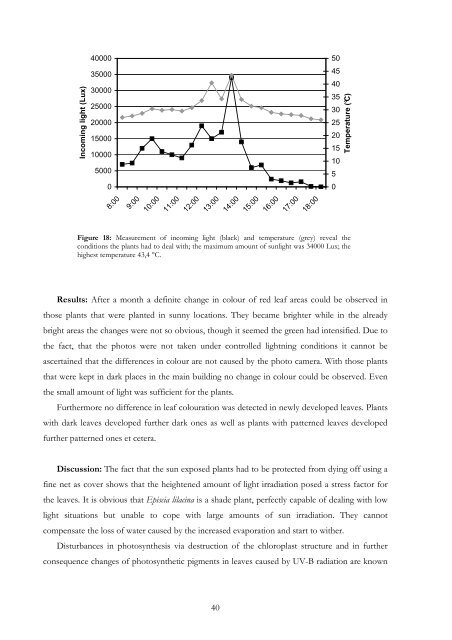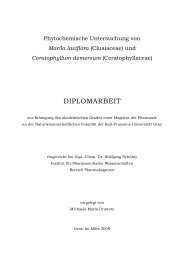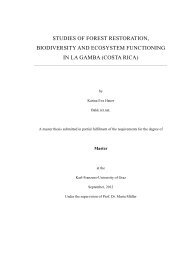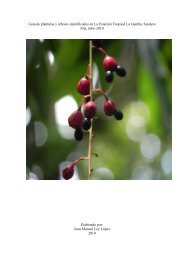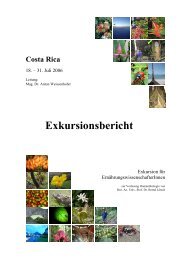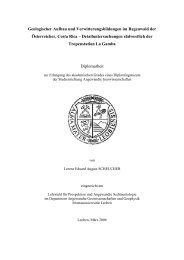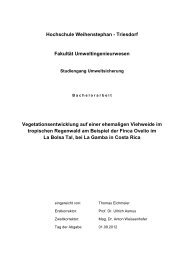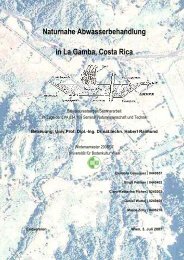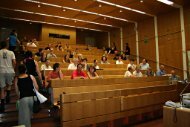Leaf colour patterns, vegetative and sexual reproduction of Episcia ...
Leaf colour patterns, vegetative and sexual reproduction of Episcia ...
Leaf colour patterns, vegetative and sexual reproduction of Episcia ...
Create successful ePaper yourself
Turn your PDF publications into a flip-book with our unique Google optimized e-Paper software.
40000<br />
50<br />
Incoming light (Lux)<br />
35000<br />
30000<br />
25000<br />
20000<br />
15000<br />
10000<br />
5000<br />
45<br />
40<br />
35<br />
30<br />
25<br />
20<br />
15<br />
10<br />
5<br />
Temperature (°C)<br />
0<br />
0<br />
8:00<br />
9:00<br />
10:00<br />
11:00<br />
12:00<br />
13:00<br />
14:00<br />
15:00<br />
16:00<br />
17:00<br />
18:00<br />
Figure 18: Measurement <strong>of</strong> incoming light (black) <strong>and</strong> temperature (grey) reveal the<br />
conditions the plants had to deal with; the maximum amount <strong>of</strong> sunlight was 34000 Lux; the<br />
highest temperature 43,4 °C.<br />
Results: After a month a definite change in <strong>colour</strong> <strong>of</strong> red leaf areas could be observed in<br />
those plants that were planted in sunny locations. They became brighter while in the already<br />
bright areas the changes were not so obvious, though it seemed the green had intensified. Due to<br />
the fact, that the photos were not taken under controlled lightning conditions it cannot be<br />
ascertained that the differences in <strong>colour</strong> are not caused by the photo camera. With those plants<br />
that were kept in dark places in the main building no change in <strong>colour</strong> could be observed. Even<br />
the small amount <strong>of</strong> light was sufficient for the plants.<br />
Furthermore no difference in leaf <strong>colour</strong>ation was detected in newly developed leaves. Plants<br />
with dark leaves developed further dark ones as well as plants with patterned leaves developed<br />
further patterned ones et cetera.<br />
Discussion: The fact that the sun exposed plants had to be protected from dying <strong>of</strong>f using a<br />
fine net as cover shows that the heightened amount <strong>of</strong> light irradiation posed a stress factor for<br />
the leaves. It is obvious that <strong>Episcia</strong> lilacina is a shade plant, perfectly capable <strong>of</strong> dealing with low<br />
light situations but unable to cope with large amounts <strong>of</strong> sun irradiation. They cannot<br />
compensate the loss <strong>of</strong> water caused by the increased evaporation <strong>and</strong> start to wither.<br />
Disturbances in photosynthesis via destruction <strong>of</strong> the chloroplast structure <strong>and</strong> in further<br />
consequence changes <strong>of</strong> photosynthetic pigments in leaves caused by UV-B radiation are known<br />
40


